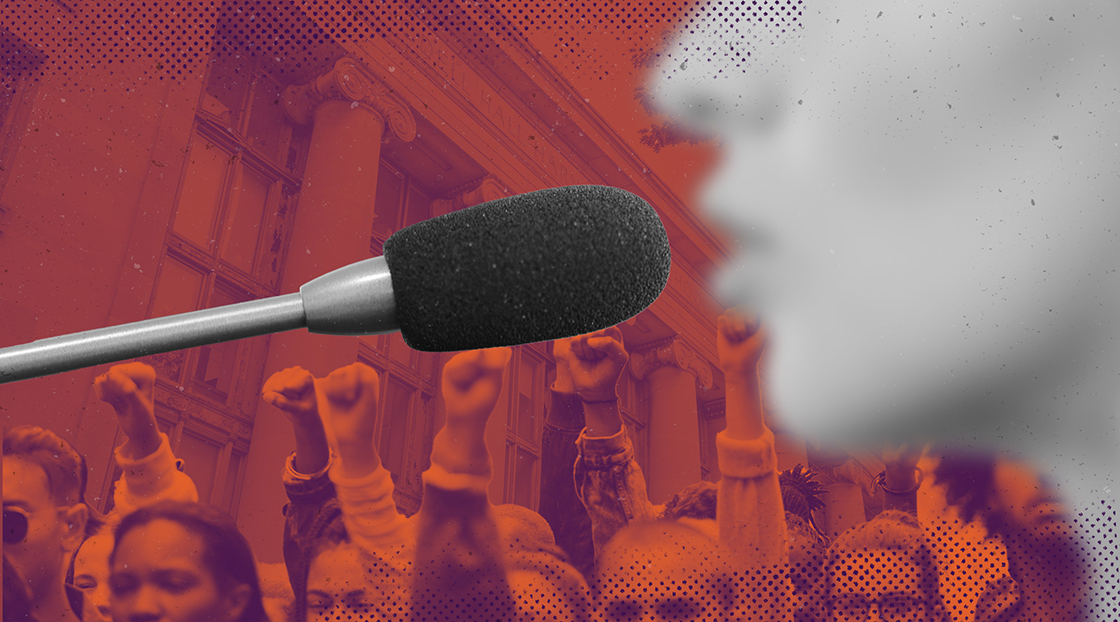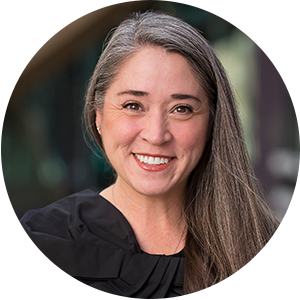This semester I have been asked, “What can I say that doesn’t make this worse?” Boards, presidents, and marketing and communications professionals are trying to talk about the complex reality of the war in Gaza in ways that are appropriate for their roles; set expectations for how to have tough conversations among members of a campus community; allow for freedom of speech and academic freedom; bridge personal, political, historical and generational divides; aid in sensemaking and grieving through tragedy; and condemn, review and adjudicate threats against groups or individuals.
How to Navigate the Impossible
College presidents face unprecedented challenges as they attempt to bridge generational and ideological divides amidst growing public fury.

Pleasing Everyone Is Impossible
The length and breadth of the list above illustrate it is a nearly impossible task to have one message meet the needs of all stakeholders based on the political and ideological divide in our country, across generations and among students.
Establishing a position that pleases everyone is proving impossible, as evidenced by the breaking and daily news associated with anger about leadership responses, a multiplicity of statements — and clarifying statements — from some leaders, and resignations across our industry. The New York Times has begun treating presidential tenures like March Madness tourney results, publishing a “who’s in, who’s out?” graphic list.
Much of the coverage of campus protests and leadership responses cheapens the value of our institutions, diminishes higher education’s impact on society and disrespects the work of our current and future leaders. We may not agree on presidents’ job performances, but I would hope we agree on the need to step away from treating them like disposable participants in a reality show competition.
Higher education leaders should refuse to play this public shame game, even if baited, and use command performances before elected officials to clarify the purpose and impact of higher education regardless of the questions asked. They should answer those, too, and bridge back to our purpose, not just note our policies.
Stick to the Mission
Rather than Monday quarterbacking if a statement is needed or how many statements or what they should say or how to discuss our work to Congress, I am encouraging presidents to take a step back from talking about the specifics of the war or addressing external demands. Campus leaders need to return to providing the resources and environment that allows students to learn in a safe space, faculty to pursue their scholarship without fear and the institution to serve its community.
My litmus test for leadership decisions has always been to ask, “What is in the best interest of the institution?” My question applies here. As an industry, we must return to doing what is best for our institutions — and that’s the work to fulfill our missions.
This approach sounds simplistic because it is. The hard part is living it. My conversations with leaders can easily shift from a strategic focus on resources and retention to a tactical discussion about the language for an email to an alum and donor, or whether another internal statement is needed.
Mission-based work returns leaders to what needs to be done to address tensions and fractures on campus, meets expectations for behavior and safety and removes emotional and fear-based responses that aren’t serving our leaders or our institutions well. The last step in this process is to share with our campus communities what we have done and communicate the support and resources available.
Culture vs. Climate
The less simplistic expectations for leaders are associated with campus culture and climate.
In a recent podcast crossover episode of Trusted Voices and Higher Voltage, Erin Hennessy, Kevin Tyler and I focused on why culture and climate matter. I noted during the episode that most of our conversation had applicability to the impossible situation in which campus leaders find themselves today. Some leaders have been asked by internal audiences, alumni and even elected officials to address the culture on their campuses. That’s not a quick turn request and may be an impossible task in the timelines provided. A better first step is to focus on the climate, which can then serve as a step toward shaping the culture.
This shift in language and approach is important because climate can be influenced by what leaders do, and by the circumstances associated with a situation and the greater environment. Culture, on the other hand, can’t be moved through a top-down approach unless there is buy-in, or subscription, from members of the community. Presidents can influence a climate quickly, but it takes time to guide the evolution and buy-in of campus culture through shared experiences and learning.
It is worth noting that the traditional college-aged students currently on campus didn’t have the introduction to the expectations for being a member of a campus community that previous cohorts and generations received. Rightfully, setting guidelines during the pandemic for maintaining health and safety, including social distancing, was prioritized over sharing expectations for how to gather and protest.
For these same students, the 2020 election year served as a backdrop for discussions on how to have difficult conversations, but usually with relatives or strangers, not necessarily with peers or members of a campus community. Their shared experiences are occurring right now, and we have the ability and responsibility to guide their learning and the setting of expectations in real time.
Communication Is Mandatory
Again, the final step is to communicate. In this case that outreach includes expectations for community member behavior and consequences for not living these policy-based norms.
I would be remiss if I didn’t say that being a college or university president is currently a stressful, unpopular and often impossible job. I am thankful for the people filling these roles and for the countless faculty and staff members who are doing the hard work to create safe learning environments for our college students.
I challenge each of them to ignore the public fury and stay focused on meeting their institution’s mission, addressing campus climate today and shifting culture long term. After all, that’s what is in the best interest of our institutions and students.
Newsletter Sign up!
Stay current in digital strategy, brand amplification, design thinking and more.



